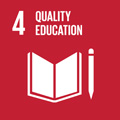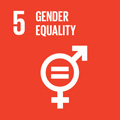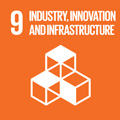- Docente: Daniele Donati
- Credits: 12
- SSD: IUS/10
- Language: Italian
- Moduli: Daniele Donati (Modulo 1) Daniele Donati (Modulo 2)
- Teaching Mode: In-person learning (entirely or partially) (Modulo 1); In-person learning (entirely or partially) (Modulo 2)
- Campus: Bologna
-
Corso:
First cycle degree programme (L) in
Communication Sciences (cod. 5975)
Also valid for First cycle degree programme (L) in Drama, Art and Music Studies (cod. 5821)
-
from Sep 16, 2025 to Oct 23, 2025
-
from Nov 11, 2025 to Dec 18, 2025
Learning outcomes
At the end of this class the students acquire the knowledge and the juridical tools useful to understand the dynamics of our political and institutional system and to work in the field of information and media At the beginning the course focuses on the analysis of the legal method and the study of our constitutional system. In the second part, also through the study of cases, students learn the rights, duties and limits related to the freedom of press and speech, as well as the legal framework that regulates the sector of traditional media (press, radio and television and telecommunications), the new media (rights to the network and rights on the net), and the show business (cinema and theater).
Course contents
MODULE 1Part I – Institutions of Public Law
This first part aims to examine the essential institutions of public law.
Introductory Concepts:
-
The State: concept and constitutive elements
-
Forms of State (the relationship between power and citizens; between power and territory)
-
Forms of government
-
The system of legal sources
-
Legal norms and the legal order
-
The Constitution of the Italian Republic
-
Ordinary laws and acts having the force of law
-
Governmental regulations
-
Overview of the European Union legal system
-
EU legal sources
-
Institutions of the European Union
-
The European Constitution and other EU legal sources
Constitutional Bodies:
-
The electorate and electoral systems
-
The Parliament
-
The Government
-
The President of the Republic
-
The Constitutional Court
-
The High Council of the Judiciary (CSM) and the judicial branch
Part II – Freedom of Information and Communication
This second part examines the constitutional norms underpinning the freedoms of information and communication, with particular focus on the right to report and its components (judicial reporting, criticism, satire, interviews).
On the opposite front, both explicit and implicit limits to these freedoms will be analyzed. Special attention will be paid to the so-called “new rights” emerging in response to the spread of new technologies.
Freedom of Expression:
-
Pre-Constitutional formulations of the right
-
Article 21 of the Italian Constitution
-
Structure of the norm
-
Subjective and objective profiles
-
Connections and distinctions with other constitutional rights
-
Negative freedom: the right to silence
Limits to Freedom of Expression
Explicit Limit: Public Decency
-
Civil and criminal law conceptions of “public decency”
-
Criteria for identifying obscene content
Implicit Limits to Freedom of Expression
-
Admissibility of implicit limits and interpretation of Article 2 of the Constitution
-
The Constitutional Court’s role in interpretation and balancing
-
Classification of implicit limits
-
The limit of honor and dignity in the exercise of the right to report
The Right to Report
-
The limit of honor and dignity
-
The justifying ground under Article 51 of the Criminal Code and the “journalistic code of ethics”
Other Forms of the Right to Inform and Their Limits
-
Criticism
-
Satire
-
Interview
Other Limits to the Right to Information
-
The right to privacy
-
Right to one's image (reference)
-
Right to personal identity
-
Right to be forgotten
-
Right of rectification
-
Confidentiality and secrecy
The Right to Be Informed
-
The interest in pluralistic information
-
Different forms of pluralism
-
Right-holders and duty-bearers
-
The right to receive news as a social right
-
The right to truth
-
The right to seek information
-
The right of access
Right of Access
-
Right-holders and duty-bearers
-
Legal framework governing access to public administration documents
-
Limits to the right of access
Freedom of Correspondence and Communication
-
Article 15 of the Italian Constitution
-
Right-holders
-
Subject matter of the right
-
Scope and requirements of communication
-
Protection of secrecy and the choice of communication means
-
Relationship between Articles 21 and 15 of the Constitution
MODULE 2
Part III – Media and the Internet
This part addresses the most relevant legal frameworks governing the various sectors of information and communication (press, terrestrial broadcasting, telecommunications, the Internet), as well as the role of regulatory and oversight bodies.
Press:
-
Historical overview
-
Press Law No. 47/1948
-
Law on Publishing and Editorial Products No. 62/2001
-
Publishing enterprises
-
Financial support for the press
-
Regulation of the Journalists’ Association and Register
-
Rights and duties of journalists
-
Right to information and criticism within journalistic enterprises
-
Journalism and privacy protection
Broadcasting:
-
Historical overview
-
The Constitutional Court's role in shaping the broadcasting system
-
The European Union and the broadcasting system
-
Broadcasting and antitrust law
-
Broadcasting and advertising
-
Satellite television
-
Competition rules in traditional broadcasting markets
-
The Gasparri reform and the Integrated Communications System
-
Competition rules in digital broadcasting
-
The Consolidated Law on Audiovisual and Radio Media Services
-
Audiovisual media services and platforms
Telecommunications:
-
Historical overview
-
EU regulations and liberalization of communications systems
-
Italian regulatory framework for communications
-
OTTs and TELCOs
-
Service-level competition
-
Network-level competition
-
Overview of major telecommunications services: telephony, cable and satellite TV, pay-TV, and interactive TV
Legal Framework of the Internet:
a) Right to the Internet
-
Economic value and legal significance of data
-
Right to Internet access
-
Digital divide and countermeasures
b) Law in the Internet Age – Between Theory and Practice
-
Self-regulation
-
Digital Rights Charters
-
Lessig’s Pathetic Dot Theory
-
Judicial solutions
-
Emergence of "new rights"
c) Legal Order, Market Actors, and Digital Challenges
-
Net Providers, Content Providers, and Service Providers
-
Digital platforms
-
Gatekeepers
-
Big Data
-
Perspectives on Net Neutrality
-
Blockchain technology
-
Legal truth, factual truth, and fake news
Part IV – Freedom of Culture and Artistic Expression
This part examines the constitutional provisions underlying the freedom of art and culture, with a particular focus on a unified reading of the various norms and the role of aesthetic and cultural value in the Italian constitutional framework. It also addresses the limits to such freedoms, especially the relationship between art and obscenity.
Constitutional Principles on Art and Culture:
-
Law and artistic/cultural production: brief historical evolution
-
The system of constitutional rights
-
Article 9 of the Italian Constitution: Promotion, development, and protection of culture
-
Aesthetic-cultural value as a founding value of the legal system
-
Article 33 of the Italian Constitution: Freedom of art, science, and their teaching
-
Artistic expression as a positive freedom
Right to One’s Image
A Unified Reading of the Norms
-
Logic and limits of public intervention in cultural matters
-
Cultural pluralism
-
Distribution of competences between State and Regions in the artistic and cultural sphere
The System of Limits to Artistic Expression
-
Art and obscenity: the interplay between Articles 21 and 33
-
Evolution of constitutional case law on art and obscenity
Part V – Performing Arts: Cinema, Theatre, and Live Performances
This section explores the essential legal framework governing the cinema, theatre, and live performance sectors, including the respective competences of the State and Regions, and the system of public institutional support, with special attention to the Single Fund for the Performing Arts (Fondo Unico per lo Spettacolo).
Cinema, Theatre, and Live Performances:
-
Historical overview
-
Role of the State and governance bodies in the performing arts sector
-
Direct intervention: public entities supporting cultural promotion policies
-
Indirect intervention: the Single Fund for the Performing Arts and other forms of economic support
-
Key features of theatre legislation and ongoing reforms
-
The special status of opera institutions
-
Legal support for cinematography and current reforms
NOTES
For students enrolled in the BA programme in DAMS (6 CFU), the programme is limited to Module 2 – Parts III, IV, and V.
Students with Specific Learning Disabilities (SLD) or Temporary/Permanent Disabilities:
Students are encouraged to contact the University’s dedicated office as early as possible (https://site.unibo.it/studenti-con-disabilita-e-dsa/en ) and to get in touch with the course instructor in order to identify the most effective strategies for attending the course and preparing for the exam.
Readings/Bibliography
For the students of Scienze della Comunicazione (12 CFU)
1. R. Bin e G. Pitruzzella, Diritto pubblico, Giappichelli, 2025, limited to Percorso 1, Chapters I, II, III, IV e Percorso 2, chapters I, II, III, VII, VIII, IX.
or, as an alternative
A. Barbera e C. Fusaro, Corso di diritto pubblico, ed.2024, Il Mulino limited to chapters I, II, III, V, VI, VII, VIII, IX, X, XI, XII, XIII, XVI, XVII.
This book is available also in an online version, see https://youtu.be/Cx2DHcCbLe8
As support, for this part at foreign students it’s recommended G.F. Ferrari, Introduction to Italian Public Law, Giuffrè Editore, 2022, limited to chapters 1,2,3,4,5,7,8,9,10,11,12,13,14.
2. G. Gardini, Le regole dell'informazione. Pluralismo e libertà nell’era dell’intelligenza artificiale, VI edizione, Giappichelli, ed. 2024.
3. F. Rimoli , voce L'arte, in S. Cassese (a cura di) Trattato di Diritto Amministrativo, Diritto Amministrativo Speciale, Tomo II, pag.1513 e ss. (on Virtuale)
limited to paragraphs 1.1, 1.2, 1.3, 2.1, 2.2.
__________________
For the students of Discipline delle Arti Figurative, della Musica, dello Spettacolo e della Moda (6 CFU)
1. G. Gardini, Le regole dell'informazione. Pluralismo e libertà nell’era dell’intelligenza artificiale, VI edizione, Giappichelli, ed. 2024
limited at chapters 5, 6, 7, 8, 9, 12.
2. F. Rimoli , voce L'arte, in S. Cassese (a cura di) Trattato di Diritto Amministrativo, Diritto Amministrativo Speciale, Tomo II, pag.1513 e ss. (su Virtuale)
limitatamente ai paragrafi 1.1, 1.2, 1.3, 2.1, 2.2.
_________________________
For all students
It is recommended to read some of the laws and Court decisions presented in class (on Virtuale)
Teaching methods
The course is taught in frontal lessons.
Attendance at lectures is strongly recommended, especially for students who do not have university-level legal knowledge.
Attendance in the classroom will be randomly checked to qualify students as "attending" students, and allow them to access the preliminary written test in simplified form (see the section Learning assessment methods)
A seminar on the method and tools of legal research is foreseen, the attendance of which is compulsory for students who intend to support their degree thesis in this subject.
There will also be some seminars aimed at deepening the knowledge of particularly relevant or topical aspects, to which scholars, representatives of institutions, professionals and experts in the field will be invited.
Assessment methods
1. COMPULSORY WRITTEN EXAMINATION (for students of the Italian language)
The examination takes place on the first day of roll call.
The examination consists of two parts, the first with 20 multiple-choice questions and the second with 3 open answers.
The multiple-choice test is preliminary and preparatory to the second part of the exam: it is passed with an evaluation of 15/20. For attending students, this preparatory test is considered passed with an evaluation of 12/20.
The final evaluation is determined by the result of the open-ended examination alone, which is the same for all students.
Therefore:
- if a student does not answer at least 15 questions in the first part (or 12, if attending), he/she will not be able to take the second part, thus finishing his/her test.
- if a student answers exactly at least 15 (or 12, if attending) of the first part, he/she continues his/her examination by taking the second part. The board will correct and assess the open questions.
The number of seats in the lecture room is limited, so students will be divided and called in several turns following alphabetical order. The time and place where they will take the test will be communicated by e-mail.
2. OPTIONAL ORAL EXAM
If a student passes the written exam, he/she can ask to have an oral exam to try to improve the final grade.
In this case he/she has to send a request to dar.didatticadonati@unibo.it in 48 hours by the publication of the written exam evaluation.
A date for the oral exam will be communicated asap.
If the student does not ask for the oral exam in 5 days the evaluation will be automatically recorded.
3.EXAMINATIONS FOR NON-ITALIAN-SPEAKING STUDENTS
Non-Italian-speaking students have the opportunity to take the oral examination on the day of the written test. They have to:
- book themselves by sending an e-mail to dar.didatticadonati@unibo.it
- register for the written examination.
Students with SLD or temporary or permanent disabilities. It is necessary to contact the relevant University office (https://site.unibo.it/studenti-con-disabilita-e-dsa/en ) with ample time in advance: the office will propose some adjustments, which must in any case be submitted 15 days in advance to the lecturer, who will assess the appropriateness of these in relation to the teaching objectives.
Teaching tools
Further course materials will be available on "Virtuale".
Links to further information
https://www.unibo.it/sitoweb/daniele.donati/
Office hours
See the website of Daniele Donati
SDGs




This teaching activity contributes to the achievement of the Sustainable Development Goals of the UN 2030 Agenda.
